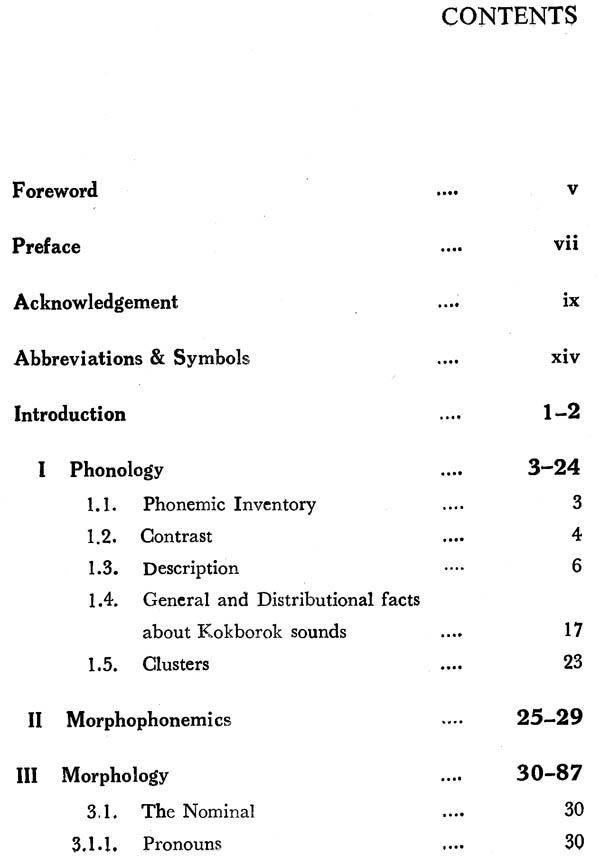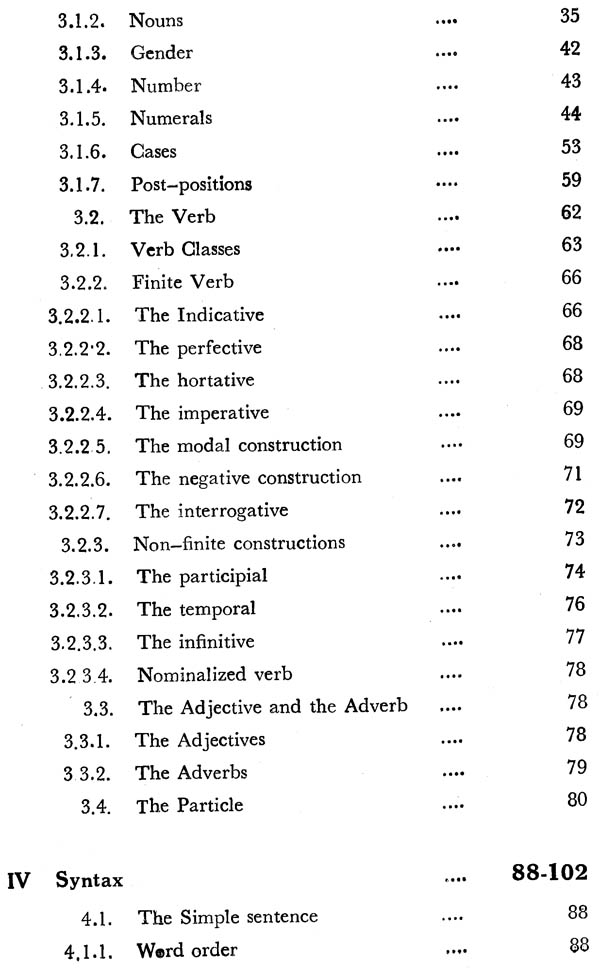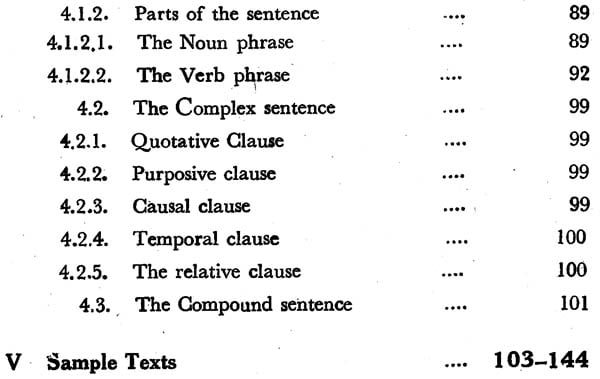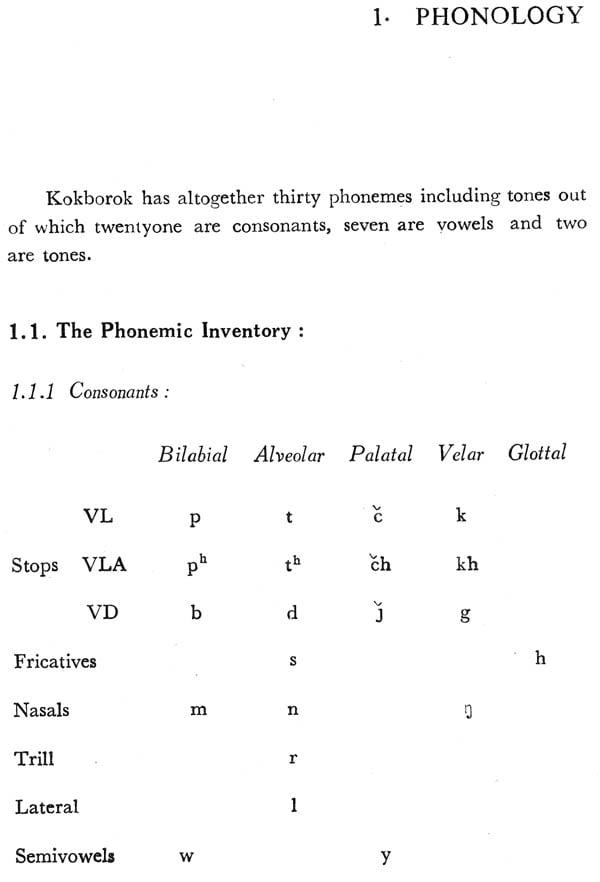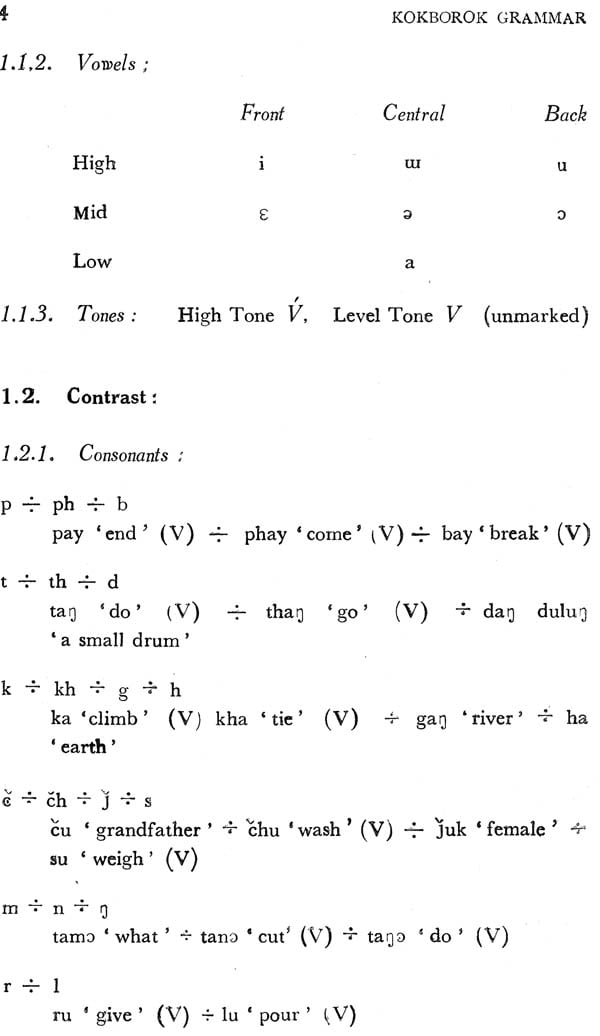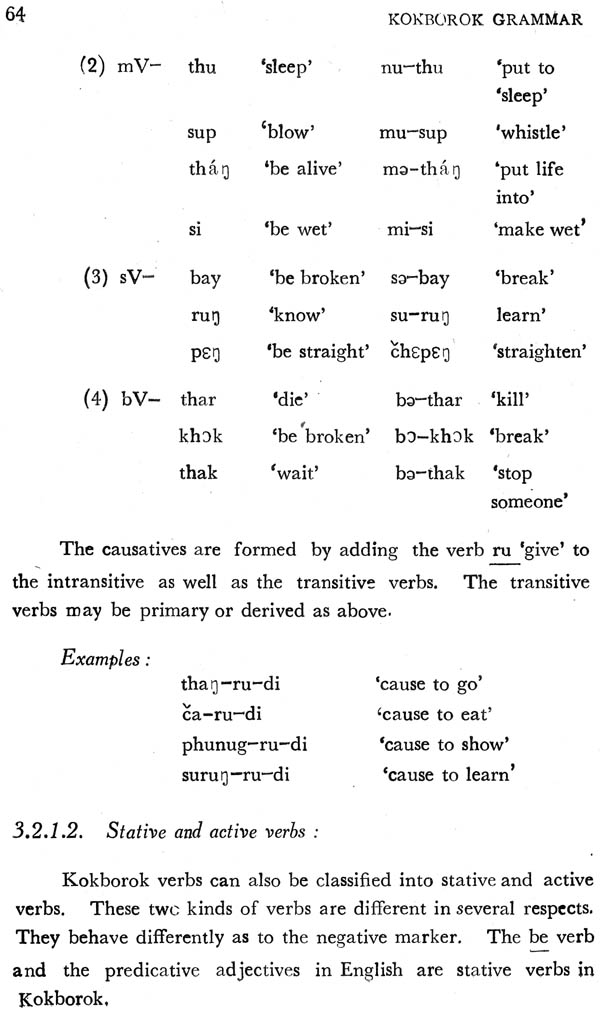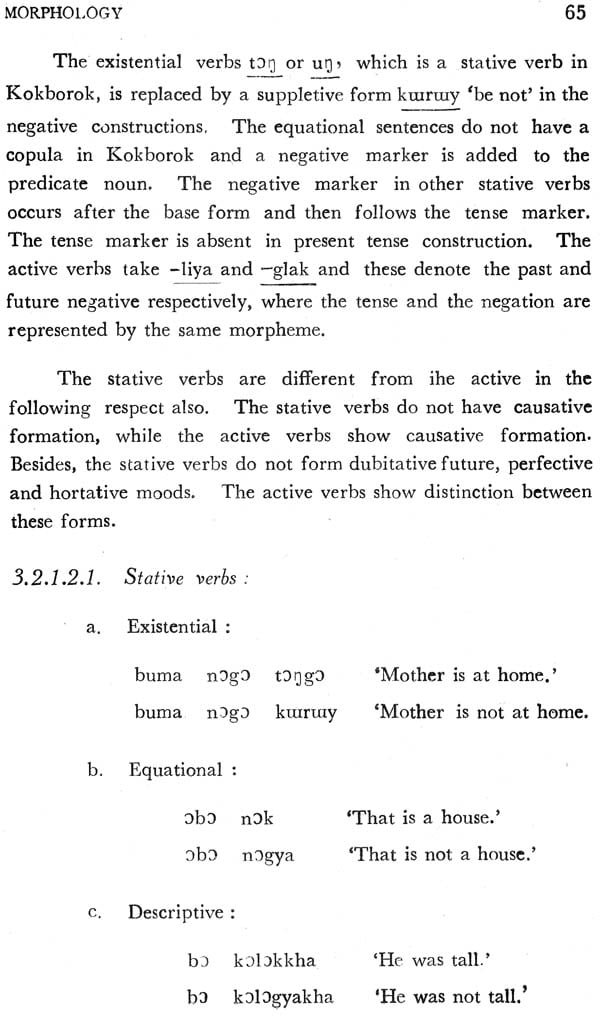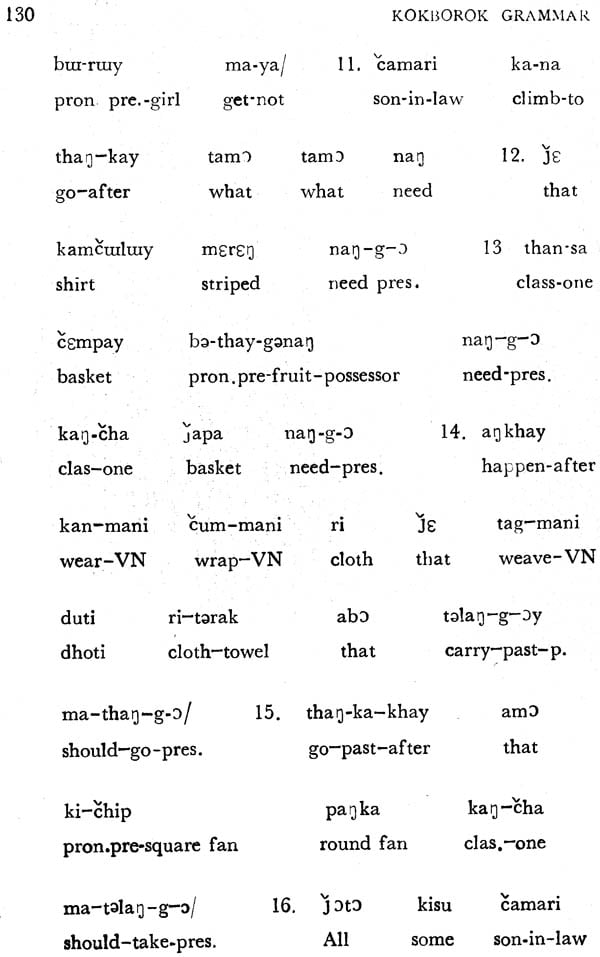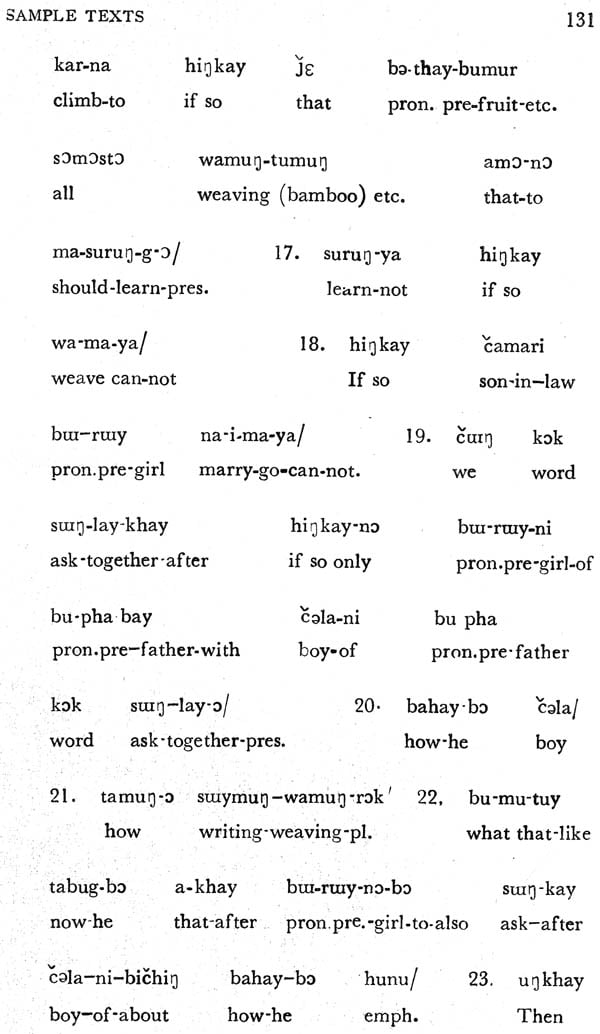
Kokborok Grammar (An Old and Rare Book)
Book Specification
| Item Code: | NAV904 |
| Author: | Pushpa Pai |
| Publisher: | Central Institute Of Indian Languages, Mysore |
| Language: | Kokborok and English |
| Edition: | 1976 |
| Pages: | 162 |
| Cover: | PAPERBACK |
| Other Details | 8.50 X 5.50 inch |
| Weight | 190 gm |
Book Description
The Central Institute of Indian Languages was set up on the 17th July, 1969 with a view to assisting and co-ordinating the development of Indian languages. The Institute’ was charged with the responsibility of serving as a nucleus to bring together all the research and literary output from the various linguistic streams to a common head and narrowing the gap between basic research and developmental research in the fields of languages and linguistics in India.
The Institute and its four Regional Language Centres are thus engaged in research and teaching which lead to the publication of a wide-ranging variety of materials, Preparation of materials designed for teaching/learning at different levels and suited to specific needs is one of the major areas of interest of the Institute. Basic research relating to the acquisition of language and study of language in its manifold psycho-social relations constitute another broad range of its interest. The publication will include materials produced by the members of the staff of the Central Institute of Indian Languages and its Regional Language Centres and associated scholars from universities and institutions, both Indian and foreign. The Central Institute of Indian Languages has initiated the Grammar series in non-literate languages in general and tribal languages in particular presenting a description of every such language in the sub-continent. This is undertaken with a view to producing instructional materials necessary for learning and teaching the language concerned. It is also expected to be of interest to research workers and scholars engaged in the field of synchronic and diachronic study of languages.
If these materials help solving problems, both individual and corporate, and help in understanding the people speaking the language, then our efforts will be deemed to have been amply rewarded.
The tribal people in India have for long lived in isolation except to be exposed for exploitation. They have not participated to their benefit in the socio economic development of the country. To come out of their isolation, it is necessary for them to learn the language of the majority people around them and a number of them have done so. But this bridges the communication gap only in one way and the whole burden of building up this bridge is carried by the minority group. It is necessary, however, for developing mutual understanding and good-will, to increase bidirectional communication between the tribal people and the majority of people of the region. For this purpose, the majority people, especially those who come in contact with the tribal people for various reasons such as civil administration, security, social service, trade, etc., should learn their language. The Grammar, which forms part of the package consisting of phonetic reader, bi- or tri-lingual dictionary and teaching manual is prepared to help them in their learning of the tribal language.
The organisation of the Grammar is based on grammatical functions rather than on grammatical forms. This will help the new learner to find easily how the different functions, which he already knows and wants to express, are formalised in this | language. Since this Grammar is primarily meant for pedagogical purposes, theoretical discussions and justifications for a particular analysis are kept to a minimum. ‘The Grammar is divided generally into two broad categories of noun morphology and verb morphology. A description of adjectives and adverbs follows verb morphology. The chapter on syntax describes the order of the constituents at the surface level.
Though the Grammar is primarily aimed at the language learner and the teacher, it is hoped that it will also be useful to Linguists interested in typology and universals, Data for the Grammar were collected in the field primarily from one informant by elicitation through word and _ sentence lists, They were then cross-checked with some other informants, The description may not be exhaustive and there might be gaps. There might be possibilities for alternative analyses. Comments and suggestions passed on to us will be useful to improve our future publications in this series.
Kokborok, spoken in Tripura belongs to the Bodo sub-group of the Tibeto Burman family. It is spoken by 2,68,948 (1971 consus provisional figures) people and has. thirteen different. dialects among which Debbarma, Riang, Halam and Tipra (also known as Noatia) are the numerically large groups. Debbarma dialect is spoken by the members of the royal family and has been the medium of communication with the rest of the Tripuri public fora long time. Debbarma dialect is understood by all the dialect groups but is vice versa not true. Hence Debbarma dialect is considered as the standard dialect of Kokborok and is taken for analysis. Debbarma dialect itself has variation depending on the different areas it is spoken. The variety spoken in the Agartala town by the elderly members of the families does not have distinction between back rounded vowel /u/ and back unrounded vowel /m/. /u/ occurs in the place of /i/ in the southern villages as in /hin/ ‘say’ for /hun/ and / ri/ ‘give’ for /ru/.
Kokborok shows all the characteristic features of the Bodo sub-group. ‘The nouns do not have the distinction of gender normally. The gender of the noun is specified only occasionally. The adjective follows the noun and so is the numeral The numeral is always accompanied by classifier, which classifies the nouns into classes on the basis of their physical features. Verbsare mainly monosyllabic. But the bound adverbs are added to them and they make the verbs long and complete. The tense marker is always added at the end of the verb, The data for the present analysis were collected during the Geld work done in 1970 and were verified and augmented during the field work in 1973, The main informants were Mr. Nophuray Debbarma and Hiruprabha Devi Debbarma who speak the Debbarma dialect and are middle aged. ‘The data were also checked with some students of the Tulaspati Girls’ School.
This grammar has four chapters, viz., Phonology, Morphophonemics, Morphology and Syntax followed by sample texts. The description of syntax is minimal giving the components of a surface sentence and their linear order. The grammar itself is an outline rather than an exhaustive treatment of Kokborok and is primarily meant for the teachers and the students of this language.
**Contents and Sample Pages**
